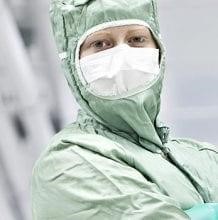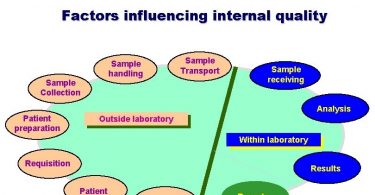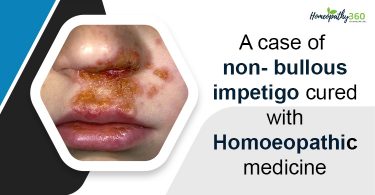Author: Prof. (Dr) Goutam Das M. D. (Homoeopathy)
[Abstract: This article deals with the understanding of the concept of the epidemic diseases and its importance in Hygiene with the contest of Homoeopathy, on the light of the teaching of our Organon of Medicine & Homoeopathic Philosophy that, whatever may the epidemic diseases are, what to do with them, how to select the remedies and how to manage the cases Homoeopathically for preventive or curative purposes are also expressed in this article.]
Image of the Theme of the Topic (Images.app.goo.gl)
Introduction: Pandemic is the popular term of today which is used to describe an epidemic when the spread is Global. Whereas Epidemic is an outbreak that affects many persons at one time and can spread through one or many communities. The Greek word, ‘epi’ means ‘upon’ and ‘demos’ means ‘people’; so epidemic means ‘upon the people’. And the Hygiene related with the conditions or practices, to maintaining health and preventing diseases, especially through ‘cleanliness’.
Definition: Epidemic diseases are the type of acute diseases that affect several people, with very similar types of sufferings from the same causes at the same time. Dr. Hahnemann uses the words infectious and contagious (Aphorism: 73), in these contexts, as the epidemic becomes infectious and contagious when spreads among the thickly populated areas. Each and every epidemic is an unique and a peculiar one, though seemingly they are identical in origin. As like any other acute disease, when epidemic diseases left to the infected person, they terminate either in death or recovery of the patient. The cause of the epidemic diseases may be due to calamities of war or floods, famines etc.
Types: Epidemic diseases are characterized by two types, recurrent and non-recurrent. One may recur in the same manner more than once in the lifetime of a person; for examples plague Levant, Asiatic cholera, yellow fever of the sea cost etc. Another, which are fixed in type, attack many people only once in lifetime; examples small pox, whooping cough, measles, bright red scarlet fever etc.
Homoeopathic Management:
We the so-called homoeopaths prescribe as we think, but a Homoeopath should prescribe the medicines by the actual interpretation of the demand of the patient. In-spite of the common signs & symptoms of the epidemic disease, if the patient shows the characteristic signs & symptoms of a particular medicine that will act as a specific remedy in that case. Now, how will we achieve the Homoeopathic specific?
1. Survey on positive cases, with the permission by the authority or,
2. Survey on positive case after recovery, if possible and,
3. Survey on published literatures reviews references to be authentic.
Homoeopathic Prophylaxis: [1]
There are three approaches which may be used to select the remedy for prophylaxis of a prevailing epidemic as per the ideas from our Organon of Medicine:
- ‘Genus-epidemicus’, (Aphorism: 100-102) an individually selected remedy for this particular outbreak of an epidemic, which is to be sought as the surest and most closely with our guiding Principles. Two other approaches are,
- ‘Proving of homoeopathic drugs can enhance the immunity’ (Aphorism: 141 – footnote), that ‘health become more unalterable; he become more robust’ and,
- ‘Prevention before birth with constitutional treatment’, (Aphorism: 284, 6th edition, footnote); The power of medicines acting upon the infant through the milk of the mother or wet nurse is wonderfully helpful …
Discussion on ‘Genus-epidemicus’:
Each and every epidemic disease is differing from other and every episode of the epidemic has to be treated by as a new one. After examining several cases in that locality, remedy has to be observed selected on the base of entire totality, from the group totality. However, a careful observation, can select the ‘Genus-epidemicus’, (Aphorism: 102). The Genus-epidemicus is the remedy selected homoeopathically for those diseases in which several patients have similar sufferings from the same cause; and the medicine can be used not only as a curative, but also as a preventive agent against this particular epidemic only.
1) Survey on epidemic disease: Dr. J.T.Kent says: [2]
Take one of the acute epidemics, not for the purpose of diagnosis, as this is easy, but to arrange it for a therapeutic examination.
- When epidemic spreads and many patients are visited, and twenty individuals have perhaps been closely observed.
- Write down all the symptoms those are in each case in a schematic form, arranging the mind symptoms of the different patients under “mind” and the head symptoms under “head”, and so on, following Dr. Hahnemann’s method.
- They – will present one image, as if one man had expressed all the symptoms, and … will find out the essential features of the epidemic.
- For example, twenty patients had aching in the bones, and at once the physician sees that, that symptom is a part of this epidemic. All the patients had catarrhal affections of the eye, and … these also must be recorded as pathognomonic symptoms.
- And so by taking the entire schema and studying it as a whole, as if one patient had experienced all the symptoms, the physician is able to perceive how this new disease … affects the human race …
- Every new patient has a few new symptoms, has put his own stamp on that disease. Those symptoms that run through all are the pathognomonic symptoms; those which are rare are the peculiarities of the different people. This totality represents to the human mind, as nearly as possible, the nature of this sickness, and it is this nature that the therapeutics must have in mind.
2) Technic for the Selection of Genus-epidemicus: Dr. J.T.Kent says: [3]
Now let the homoeopath take the next step, which is to find in general the remedies that correspond to this epidemic. By the aid of a repertory he will write after each one of these symptoms all the remedies that have produced that symptom.
- Having in this way gone through the entire schema … and he will see that six or seven remedies run through the picture, and, therefore, are related to the epidemic, corresponding to its whole nature.
- This may be called the group of remedies for that particular epidemic, and with these he will manage to cure nearly all his cases.
- The question now arises, which one is the remedy for each individual cases? When the homoeopath has worked out the half dozen of the remedies, then he can go through the Materia Medica and get their individual pictures nicely so fixed in his head that he can use them successfully.
- Now the homoeopath called by a family with half a dozen patients in bed from this epidemic, and he finds a little difference in each cases, so that one remedy is indicated in one patient and another remedy in another patient.
- There are many things in homoeopathy as administering one of these remedies to all in the family because of a diagnostic name.
- While one of the remedies in the epidemic group will most likely be indicated in many cases, yet if none of these should fit the patient, the physician must return to his original anamnesis to see which one of the other remedies is suitable.
- Very rarely will a patient demand a remedy not in the anamnesis. Every remedy has in itself a certain state of peculiarities that identifies it as an individual remedy, and the patient has also a certain state of peculiarities that identifies him as an individual patient, and so the remedy is fitted to the patient.
- No remedy must be given because it is in the list, for the list has only been made as a mean of facilitating the study of that epidemic.
Discussion on ‘Proving of homoeopathic drugs can enhance the immunity’:
The habitual prover, who got protection from acute or seasonal diseases, undertaking proper methods of ‘Homoeopathic Drug-Proving’.
Discussion on ‘Prevention before birth with constitutional treatment’:
Constitutional treatment in each and every individual person is the best method of prevention in Homoeopathy, for any epidemic disease, under a qualified and responsible Homoeopath only.
Micro-Organisms, Susceptibility and Homoeopathy:
Although we know, first onset of an epidemic attacks the masses mercilessly due to its virulence and unknown to our immune system or might be due to repeated exposer make us prone to morbidly susceptible towards the infectious; but Susceptibility is prior to all contagion. If an individual is not susceptible to ‘Small Pox’, he cannot take it, and will not receive it though he goes near worst cases, or eats a Small Pox crust or same as often swallowed a whole spoonful of comma bacillus in Cholera.
- Koch of German, Pettenkofer of Munich, Metchnikoff of Paris proved that Koch’s comma bacillus is really capable of producing true cholera, only when right conditions exist. [4]
- Germs are only a proximate or exciting cause under certain conditions. Other predisposing, contributing causes must exist before the germ starts operating. [5]
- The cause of tuberculosis is the tubercle bacillus. The necessary conditions (secondary causes) of the action of the bacillus are the peculiar bodily constitution, predisposition, susceptibility and environment of the patient. Without these concomitant conditions or causes, no one would ever have tuberculosis. [6]
- An examination of the nasal or pharyngeal secretions … revel the presence of numerous pathogenic organisms from the inhaled dust of the street. But we are not … endangered … nature has her own … protection … against … morbific influences. They are harmless to us in our normal condition because … morbid susceptibility … is absent … The vital resisting power of the healthy individual is superior to the infecting power of … infecting agent, under ordinary conditions … “the best protection against contagion is good health.” [7]
- For instance there are sanitary conditions … social and moral conditions … facilities and mode of transportation … inter-communication between nations, communities and individual to be considered. There are also atmospheric and telluric conditions … conditions of individual susceptibility … was an essential condition for … in all such cases. [8]
- Therefore, “Kill the germs and cure the disease!” It was very easy to kill the germs – in a test tube; but to kill them in to the living organism … without killing the patient … as they very soon learned. [9]
- As a matter of fact, the microbes are scavengers … harmless… not the (primary) cause of disease … (therefore), should correct the Vital Force (Morbid Susceptibility) … Save the life of the patient first and don’t worry about the bacteria. They are useless things … The Bacterium is an innocent feller, and if it carries disease it carries the Simple Substance which causes disease, just as an elephant would. [10]
- Two things thus constitute disease:- first the qualities of the organism, which constitute the conditions for the disease; second, the external causes of the disease. [11]
- Forms of disease also obey a fixed law of constancy. Entire groups of disease, chronic and acute, and externally the most various, arise from the same morbid cause and form a unit in their succession, although one form occurs in childhood, another in youth and still another in advanced years. Syphilis and tuberculosis are striking examples. [12]
When, we living in unhealthy surroundings, eating improper food, leading a disorderly life etc. creates a favourable condition, fertile base of the field to forming the colony of the germs. That is the province of Hygiene, alone is sufficient to restore many sick persons to health. Whereas Morbid-Susceptibility to be counter with internal Medicine.
Hygiene, Medicine and Homoeopathy: [13]
‘Make a study of Hygiene in its relation to Medicine!’ Know the nature and relation of the science of Therapeutics and Hygiene.
1) That Therapeutics concerns herself only with the discovery and selection of an individually specific remedy for each individual case of disease; which is done in accordance with a Therapeutic law.
2) That the province of Hygiene is to discover. That Hygiene alone is sufficient to restore many sick persons to health.
3) The practicing physician is at one the same time Hygienist and Therapeutist, employing often, therefore, for the same case both specific remedies and various ‘auxiliaries’.
4) That in so far as Hygiene is concerned, Homoeopaths and Allopaths occupy common ground,-the philosophy of the science which is being the same for both however modified and shaded in practical application by the different Therapeutics of the two school.
5) That in Therapeutics alone – that is, in the discovery and selection of the individually specific remedy for each individual case of disease – do we differ radically from the old school of medicine, –the Allopaths having, in fact, no science of Therapeutics, whatever their philosophy of cure is being an application of the principles of Hygiene to all diseased conditions.
Hence, The Science of Homoeopathic Therapeutics has the especial role in internal Medicine.
History of Homoeopathic Prophylaxis:
Dr. Samuel Hahnemann achieved name & fame from his effective treatment of ‘Cure and Prevention of Scarlet Fever’, in 1801 by Belladonna as a specific prophylactic remedy for Scarlatina (Aphorism: 73, footnote) and a kind of purpura miliaris, which came from the west also successfully controlled by the use of Aconite, as Genus-epidemicus.
- The first approach for homoeopathic prophylaxis, use of nosode or sarcode in prophylaxis like Influenzinum in flu, Morbillinum in measles etc. however this may be successfully used particularly early in the epidemic of an acute miasmatic illness, before a Genus epidemicus – the specific remedy for the individual epidemic – has been identified. Following Hering’s introduction of nosode into our Materia Medica.
- Boenninghausen experimented early on, with considerable success, at using Variolinum (the smallpox nosode) for the prophylactic treatment of smallpox.
- The second approach is to select a remedy deemed central to the generic nature of the epidemic illness, by anamnesis of the disease-as-named, without specific attention to the individuality of the prevailing epidemic or the individuality of a specific case.
- As like Drosera for whooping cough or Eupatorium perfoliatum for influenza. Here individual nature of the particular epidemic is not taken into account, and this as like as Hahnemann suggested Camphor for Asiatic Cholera. Boenninghausen had success in smallpox prophylactic purpose by using Thuja occidentalis.
- Dr. M.L.Tyler [14] says, One has often heard, “This is a Bryonia year!” “Mercurius is curing all the colds just now… “ Then, wind and weather change, and another set of remedies for another set of patients crops up. … a cold, dry, East wind, such drugs as Aconite, Bryonia, Heper, Nux. … sudden cold wet, cannot stand cold wet conditions and here Dulcamara, Natrum sulph., or Rhus … that good prescribers will find … suddenly getting quite a number of Lycopodium cases? … perhaps social – economic – or even meteoric are putting a severe strain on persons of the Lycopodium make-up.
For the purpose of Homoeopathic Prophylaxis, we should remember and wouldn’t anchor any misconception in our mind that the Homoeopathy (“similia similibus curentur”, means let like be treated or cured by like; i.e. stronger and similar in manifestation, whilst differing in kind), with Isopathy (“equalia equalibus curentur”, means same cure same.) or Tautopathy (“for every substance, small doses stimulate, moderate doses inhibit, large doses kill”.) and they are not the same.
Arts of Homoeopathic Therapeutics:
Our therapeutics aim at first to select a Genus-epidemicus or an acute remedy as per the demand of the patient to control the acute episode of the epidemic and followed by true Homoeopathic Constitutional Treatment as per Individualisation in each and every case must be needed.
- Dr. M.L.Tyler says … But in Homoeopathy, one medicine will not work for another. Homoeopathy means individualization. It is not enough to diagnose pneumonia, and to give a pneumonia medicine. With Hahnemann we must diagnose “a kind of pneumonia – a kind of pleurisy”. And what kind? –Why, a Phosphorus kind – a Bryonia kind – a Kali carb. Kind – a Natrum sulph. Kind – a Mercurius kind – of pneumonia. It is the symptoms that always, decide, if curative work is to be done. One may palliate, and the patient recovers, with perhaps less suffering; but that is not CURE. [15]
- Dr. M.L.Tyler also says that it’s important to remembering … Here is a tip from one of our teachers, who speaks from personal experience. In Natrum mur, patient with a severe headache, do not give Natrum mure, for the acute condition or you will fearfully intensify the suffering. Give its “acute” Bryonia; and only the Natrum mure, in a quiescent period. [16]
- Dr. J.T.Kent says …With a superficial examination you will find Aconite indicated, but just as you give it you will fail. Give Sulphur at once and you will cure your patient. [17]
- Dr. J.T.Kent also says …The study of the homoeopathic pathogenesis, which is so extensive, requires so much time and perseverance that men who are incline towards carelessness, indolence and levity, can do very little to make a showing for professional glory; hence the stupid, the flippant and the “smart” must always seek the material method and make it the basis of his efforts, thereby associating with, or placing himself on the same level as the mechanic. Of course, all liquid substances seek their own level. [18]
Hence, as Homoeopathic Therapeutics, we should know the difference and our duty as well as responsibility as Hygienist and Therapeutist, clearly before in our mind.
Conclusion:
At last, we may conclude that Homoeopathy cannot prove itself in Test-Tube Science, but has been proved to be effective and has shown Evidence based Science. Dr. M.L. Tyler says, “Law does not fail. It is we who fail in our attempts to put it in action.” When an aeroplane crashes no one says, “The laws of gravitation – motion – physics – have failed in this case!” – the fault is sought in faulty adaptation. Law is inexorable. [19] As responsible Homoeopaths hope, we should confirm the FACTS, for the benefit of our suffering society, by the true practice of Homoeopathy, only.
Remarks:
1) Homoeopathy only considers ‘Cure’ as, “recovery undisturbed by after-sufferings,” and ‘Healing’ can be understood, ‘treat the whole and care after recovery’.
2) Homoeopathy is the Best Science of Internal Therapeutics Medicine both for preventive as well as curative purpose of the epidemic diseases, whether we realise it or not.
3) Homoeopath should follow the teachings of our Homoeopathic Stalwarts, respecting to our Laws and Principles only.
Reference:
1) Boericke W, Organon of Medicine; S.Hahnemann, translated by R.E.Dudgen; Indian edition, Calcutta, Roy Publishing House, 1961[1]
2) Kent JT, Lectures on Homoeopathic Philosophy; Memorial edition, B.Jain Publishers Pvt. Ltd., New Delhi, 1990[2, 3]
3) Kent JT, New remedies, clinical cases, lesser writings, Aphorisms & Precepts; Indian Edition, Sett Dey & Co. Calcutta, 1973[10, 17, 18]
4) Roberts HA, The Principles and Art of Cure by Homoeopathy; B.Jain Publishers Pvt. Ltd., New Delhi, 1992
5) Close Stuart, The Genius of Homoeopathy; B.Jain Publishers Pvt. Ltd., New Delhi, August 2002[4, 5, 6, 7, 8, 9, 11, 12]
6) TYLER ML, Homoeopathic Drug Picture; B. Jain Publishers Pvt. Ltd., New Delhi, ISBN 81-7021-163-8; BOOK CODE B-2529 [15, 16]
7) 6) TYLER ML, Pointers to the Common Remedies; B. Jain Publishers Pvt. Ltd., New Delhi, Low Priced Edition: August – 2002; ISBN 81-7021-036-4; BOOK CODE BT-9023 [14, 19]
8) Dunham Carroll, Homoeopathy The Science of Therapeutics; Indian Books & Periodicals Publishers, New Delhi-110005; First Reprint Edition: July 2012; ISBN: 81-7467-223-0; Book Code No.: IB0292 [13]
About Author:
Prof. (Dr.) Goutam Das M.D, (Homoeopathy)
Dept. of Organon of Medicine, AJSHMC&RI, Mehsana, Govt. of Gujarat – G. I. A Institution.
Examiner, H.N.G. University, Patan, (Gujarat)
Ex. Academic Director & Principal In-Charge, NHMCH&RC, Agra (U.P.)
Ex. Examiner, Homoeopathy University, Jaipur, (Rajasthan)
Ex. Faculty & Examiner (U.G. & P.G.) Dr.B.R.A.University, Agra, (U.P.)
Ex. Faculty & Examiner JRN RVHMC, Deemed to be University, Udaipur, (Rajasthan)
Ex. Senior House Physician, PCHC&H, Kolkata (W.B.)





